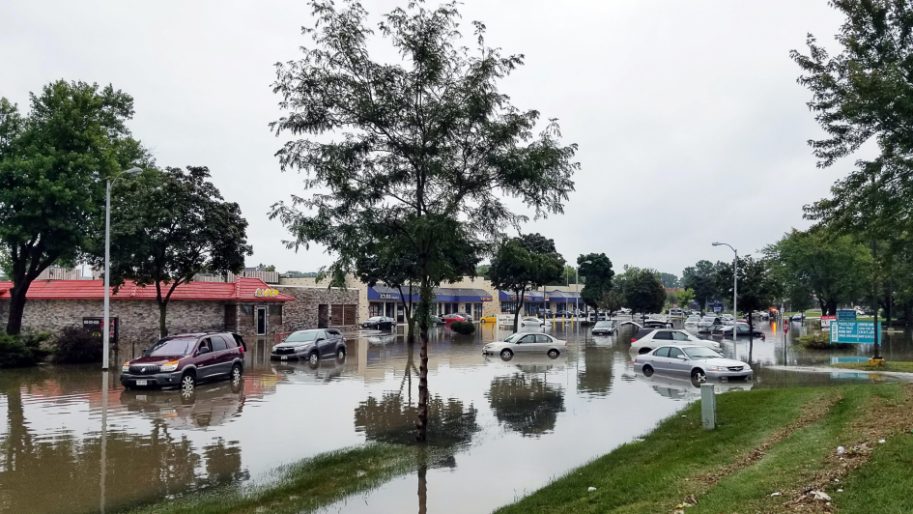The variety of extreme weather that North American facilities can be exposed to comes with a wide range of risks and threats, particularly as the planet continues to see the ongoing effects of climate change.
Extreme heat and wildfires are big summer risks but so, too, are floods and flash floods, which can be more common than one might think in summer and fall due to thunderstorms and torrential downpours.
Flood cause a host of problems for facility operators and managers and cleaning and maintenance crews, from water damage to the foundations of a building to the threat of mould and so much more.
CMM has offered some tips on how to approach flood cleanup from start to finish.
Safety first
Even before anyone enters the building, be sure to check for damaged power lines, gas lines, and other structural damage, such as sagging floors or ceilings. Turn off the main electrical power and water systems — electricity and water are a notoriously dangerous combination — and wherever possible, open doors and windows to help air out the building.
Make protection a priority
The U.S. Centers for Disease Control and Prevention (CDC) suggests that post-flood protection should include hard hats, goggles, N95 masks or high-protection respirators, heavy work gloves, long-sleeved clothing, and waterproof boots with steel toe and insole. If sewage is involved, make sure the gloves and boots are made of rubber.
Report the damage
It’s vital to report a building’s flood damage to an insurance company as soon as possible.
Before beginning cleanup, take photos of all the damage to both the interior and exterior of the building and label all images and recordings; photograph the make, model, and serial number of all equipment; separate damaged items from undamaged items; and keep samples of carpeting, flooring, wallpaper, and drapery wherever possible.
Clean safely and effectively
After all these preliminary measures have been taken, it’s time to focus on safe and efficient cleanup of a flood area.
CMM recommends:
- Prioritizing the tasks that are the most important
- Combining teams to move heavy or bulky objects
- Immediately removing any wet items from the building
- Safely and responsibly disposing of damaged items that absorb water and cannot be cleaned
- Cleaning walls, hard floors, and other hard surfaces first with soap and water and disinfecting with a solution of one cup of bleach to five gallons of water to help prevent mould, while being cautious to never combine bleach and ammonia
- Using hot water to wash any fabrics that can be salvaged
- Ensuring workers take breaks and rest as needed and providing clean, safe water for them to drink
- Instructing all workers to wash their hands and use hand sanitizer regularly and often
- Watching out for sharp or pointy objects, such as protruding nails and screws, metal, or broken glass
- Ensuring the prevention of carbon monoxide poisoning through measures such as keeping any generators or pressure washer engines outside and at least 20 feet away from any doors, windows, or vents
Above all, as should be the policy for any restoration or cleanup work, err on the side of caution!










